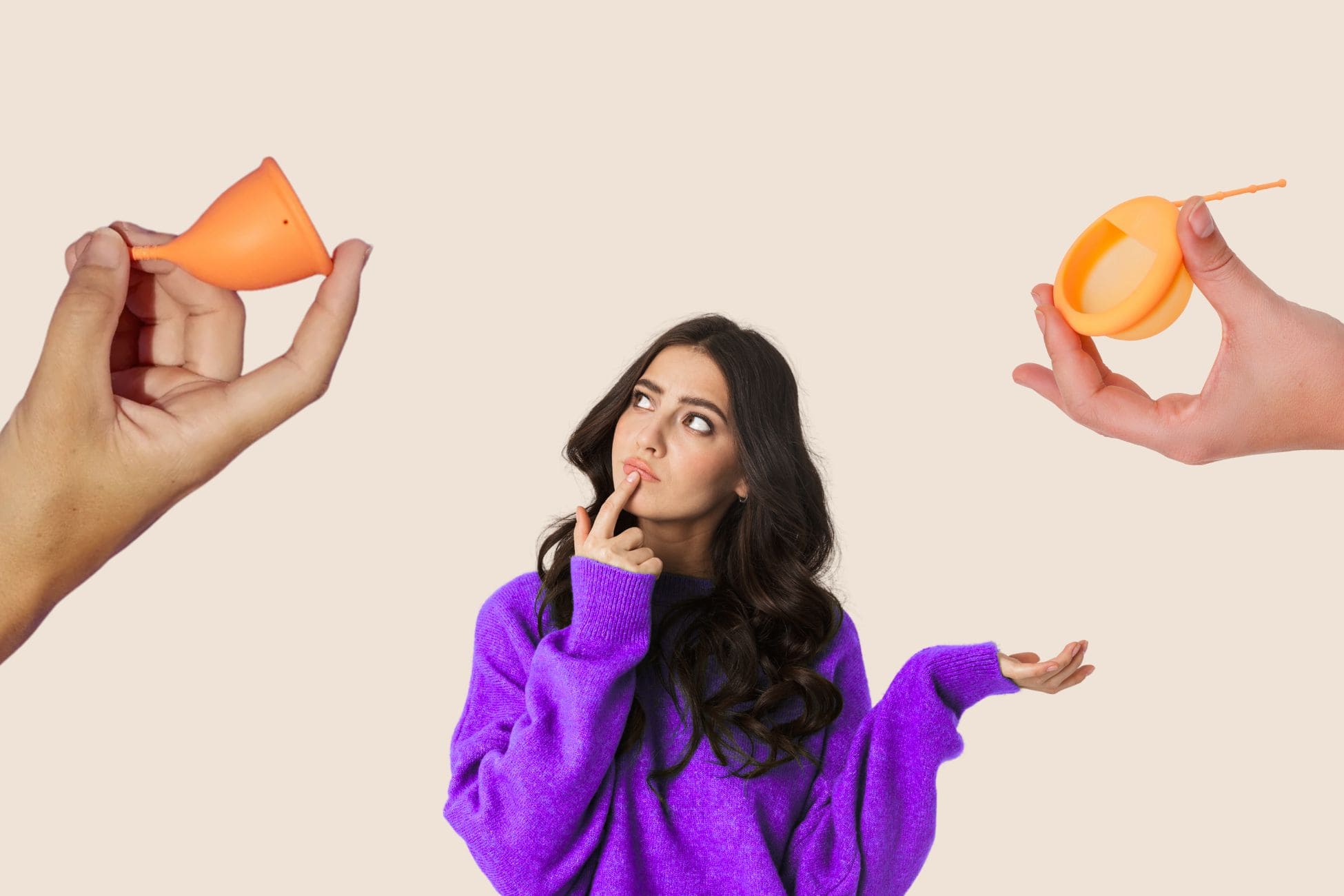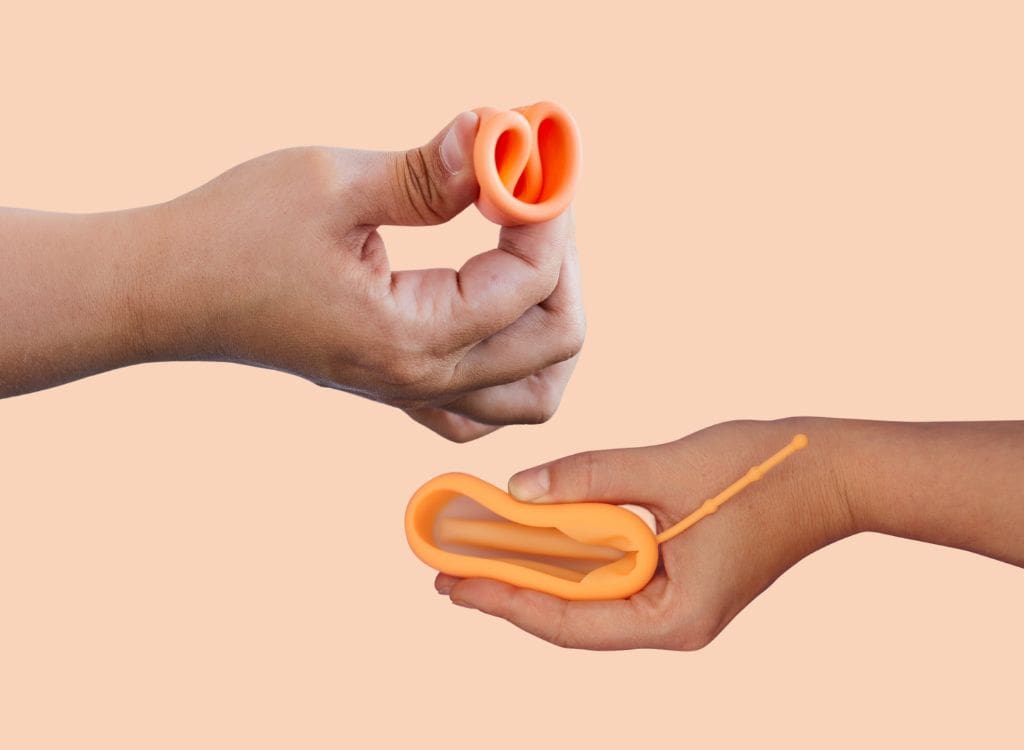
Menstrual Disc: What Is It and How Does It Work?
26 de May de 2025
Soul food: 7 foods that make you happy!
22 de June de 2025
Menstrual health in focus 🩸
More and more women are becoming mindful of their health, their quality of life, and with that, their menstrual health. But menstrual health is about more than just your period: it’s a key part of sexual and reproductive well-being, influencing many physical, emotional, social, and cultural aspects of life.
What does menstrual health include? 🩸
- The entire menstrual cycle, not just the bleeding
Every phase matters: follicular phase, ovulation, luteal phase.
Regularity, duration, and accompanying symptoms are important indicators. - Access to menstrual products
From pads and tampons to menstrual cups and discs — it’s not just about variety, but also about affordability, availability, and proper usage. - Comprehensive menstrual education
Knowledge without taboos — how does the cycle really work?
Education should start early, and it should include all genders. - Hygiene and safe conditions
Access to clean water, soap, and private toilets.
Schools and workplaces must be menstruation-friendly environments. - Physical and emotional well-being
Timely diagnosis and treatment of conditions like endometriosis, PMS, or PCOS.
Mental health support for anxiety or emotional stress related to menstruation. - Ending taboos and advocating for rights
No more myths, shame, or cultural stigma.
Menstruation is a human rights and equality issue. - Impact on daily life
Menstruation affects school, work, mobility, and social participation — and that should never be ignored.
Menstrual hygiene today 🩸
Thankfully, there are plenty of options available today:
Disposable and cloth pads, tampons, period underwear, menstrual cups, menstrual discs, menstrual sponges, and more.
If you’re looking for a healthier, more sustainable, and practical alternative, menstrual cups or menstrual discs are excellent choices.
What’s the difference between a menstrual cup and a menstrual disc? 🩸
Although both menstrual cups and discs collect menstrual fluid (rather than absorb it), there are some key differences:
- Shape: Menstrual cups are bell-shaped, while menstrual discs are round and flat.
- Placement: The menstrual cup sits in the vaginal canal and creates a suction seal. The menstrual disc sits higher up, at the base of the cervix, and works without suction.
- Usage: Menstrual discs can be worn during penetrative sex — menstrual cups cannot.
Many find discs more comfortable for extended wear or during a heavy flow.

Menstrual Disc vs. Menstrual Cup 🆚
Feature | Menstrual Disc | Menstrual Cup |
Shape | Flat, disc- or ring-shaped, flexible | Bell- or cup-shaped |
Placement | Sits deep in the back of the vagina, behind the cervix | Worn lower in the vaginal canal |
Capacity | Higher volume (up to 70 ml or more) | Lower volume (around 20–40 ml) |
Collection method | Collects blood like a shallow bowl | Collects blood like a small cup |
Removal | Removed by hooking a finger on the rim or using the grip tab | Removed by pulling the stem or pinching the base |
Stays in place | Held at the top of the vagina by pelvic floor muscles | Stays in place through suction (vacuum effect) |
Reusability | Available in both disposable and reusable versions | Typically reusable (up to 10 years with proper care) |
Beginner-friendliness | Often more intuitive for first-time users | Usually requires some practice to insert correctly |
And finally:
Which one is right for me: menstrual cup or menstrual disc? 🩸
The key difference between the two lies in how they stay in place: the menstrual cup uses suction (a vacuum seal), while the disc does not. This feature plays a major role in determining which product might be the better fit for your body and lifestyle.
Menstrual cup – stays in place through suction (vacuum seal) 🛑
✔️ Who is it suitable for?
- People with strong pelvic floor muscles:
The cup’s vacuum seal tends to hold better when pelvic floor strength is high. - Physically active individuals (fitness, yoga, dance, etc.):
Thanks to the vacuum effect, the cup stays securely in place even during movement. - For medium to heavier flow:
As long as your menstrual flow doesn’t exceed the standard capacity of 20–40 ml, a cup is a great option. - For anyone looking for a fully sustainable and long-lasting solution:
With proper care, many menstrual cups can last up to 10 years.
⚠️ When might it feel uncomfortable?
- If you have a low cervix:
The cup may feel intrusive or might not fully open, which can lead to discomfort. - If the suction feels unpleasant:
Some find the vacuum sensation uncomfortable or struggle to break the seal during removal. - For those with vaginal sensitivity or pelvic pain:
The pressure from the vacuum can be irritating or even painful for some people.
Menstrual disc – stays in place without suction 🔄
✔️ Who is it suitable for?
- People with a high or variable cervix:
Menstrual discs are inserted deeper and tend to adapt better to this type of anatomy. - If the vacuum from a menstrual cup feels uncomfortable:
Menstrual discs don’t rely on suction and are often gentler to remove. - If you want to have penetrative sex during your period:
A menstrual disc can remain in place without interference or leakage — as long as it’s properly positioned (always proceed with care!). - For very heavy periods:
Discs typically hold more than cups — often up to 70 ml or more. - After childbirth, with a slight prolapse, or a weaker pelvic floor:
Many people find a disc more comfortable than a suction-based cup — but always consult a medical professional beforehand.
⚠️ When might it feel uncomfortable?
- With a very strong pelvic floor:
High pressure (like from straining) may cause the disc to shift out of place. - If insertion feels unfamiliar:
Because it sits deeper, it may take some practice to get the positioning right. - If it’s not inserted correctly:
Improper placement can lead to leaks.
Our tip:
If you’re unsure whether a menstrual cup or a menstrual disc is right for you, it can be really helpful to determine your cervix height and get a feel for your pelvic floor. You’ll find a step-by-step guide to measuring your cervix here:
👉 Sizing guide on PapayaCup.com
And if you still have questions afterwards, feel free to reach out to us:



